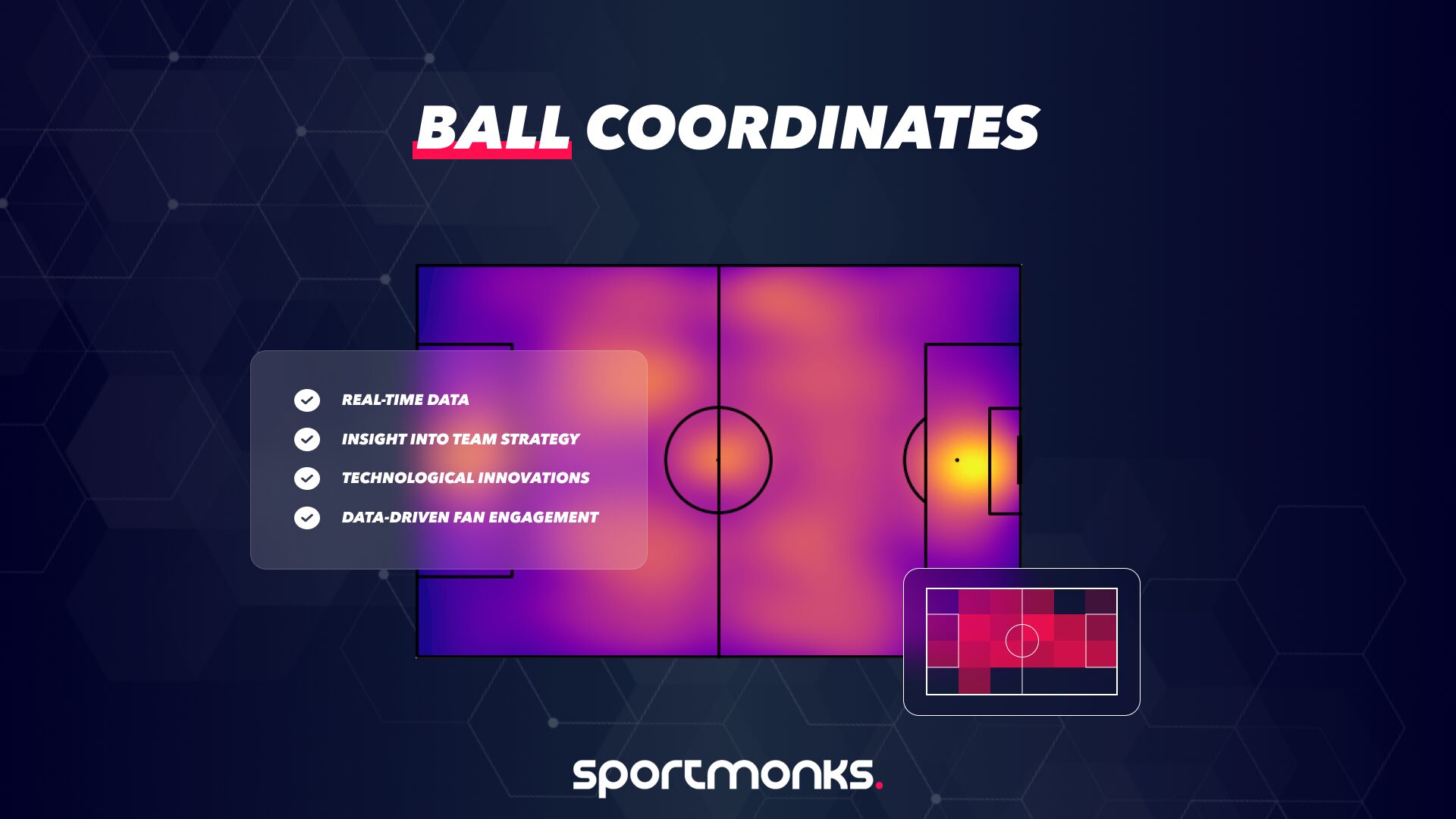
Contents
What is passing accuracy?
Passing accuracy is a straightforward percentage that quantifies how often a player or team successfully completes their passes . It’s calculated using the following formula:
Passing Accuracy = (Completed Passes / Total Passes Attempted) * 100
Let’s break down the components:
– Completed passes: These are successful passes that reach a teammate. A pass is considered completed when a teammate gains control of the ball, even if they don’t immediately continue the play.-
– Total passes attempted: This includes all passes the player or team tries to make, regardless of whether they are successful.
For example, if a player attempts 50 passes in a match and 40 of them reach a teammate, their passing accuracy would be (40/50) * 100 = 80%.
Passing accuracy is a widely used metric because it provides a quick and easy way to assess a player’s or team’s passing ability. However, it’s important to remember that it doesn’t tell the whole story. A high passing accuracy doesn’t necessarily mean a player is a creative playmaker. It could simply mean they are playing safe, short passes.
On the other hand , a lower passing accuracy might not indicate poor passing ability but rather a player attempting more difficult, forward-thinking passes. Therefore, passing accuracy should be considered alongside other metrics, like key passes, through balls, and assists, to gain a more comprehensive understanding of a player’s passing contribution. The context of the passes is also key, as passes under high pressure, long passes, or passes designed to break lines are harder to complete than easy short passes.
Factors affecting passing accuracy
Several factors influence a player’s or team’s passing accuracy, making it a multifaceted aspect of the game. Here are some key factors:
– Player skill and technique: First up, the obvious one: skill. Some players just have a better touch, better vision, better everything. They can ping a ball across the pitch or thread a through ball like it’s nothing. Practice helps, of course, but some players are just naturally gifted.
– Pass type and difficulty: There are several types of passes a footballer can attempt. A simple five-yard pass is a lot easier than a 40-yard diagonal. A through ball to split a defence? That’s high risk, high reward. You’re not going to get 100% accuracy on those.
– Player position and role: Midfielders, they’re the playmakers, so they tend to have higher accuracy. Defenders? They’re often just trying to clear it, so accuracy isn’t their main concern.
– Team tactics and playing style: A team’s tactical approach and playing style can impact passing accuracy. Teams that favour a possession-based approach and prioritise short, intricate passing are likely to have higher accuracy than teams that rely on long balls and direct play. The team’s overall movement and positioning also play a role, as players need to be available and in good positions to receive passes.
– Game context: The game itself changes things. If you’re winning, you might play it safe, keep the ball, your accuracy goes up. If you’re losing, you’re going to try high-risk passes, maybe your accuracy drops.
– Opponent pressure and defensive organisation: Are they pressing you hard, not giving you a second to think? Your accuracy will drop. Are they sitting back, giving you space? You’ll have more time and space to pick your pass.
– Pitch conditions and weather: The condition of the playing surface can also play a role. An uneven or wet pitch can make it harder for players to control the ball and execute their passes accurately. Similarly, adverse weather conditions, such as rain or wind, can affect ball trajectory and make passing more difficult.
Seeing the game through passes
Right, numbers are one thing, but what do they mean on the pitch? How do we actually use passing accuracy to understand what’s going on?
First off, it’s not just about the percentage. Look at where the passes are happening. Are they all in the defensive third? That might mean the team’s playing it safe, not really going anywhere. Are they happening in the attacking third? That’s where the danger is, where you’re trying to create chances.
Then, there’s the type of pass. Are they short, simple passes, keeping possession? Or are they long, diagonal passes, switching play? Are they through balls, trying to split the defence? Each type tells a different story.
You can even look at passing networks. Who’s passing to who? Are there certain players who are always involved? Are there players who are isolated? This can show you how the team’s playing, who’s controlling the game.
And think about pressure. Are passes being made under pressure, or are players having time and space? A drop in accuracy under pressure tells you a lot about a team’s composure.
Basically, it’s about looking at the bigger picture. Passing accuracy isn’t just a number, it’s a way to see how the team’s playing, how they’re trying to win the game. It’s like reading the game’s fingerprints.
Sharpening your passing
Getting better at passing takes good technique, knowing what’s happening around you, and lots of practice. Here’s how to improve this key skill:
– Fine-tuning your technique: Good passing starts with solid basics. Focus on how you place your foot, how you hit the ball, and how you balance. Daily practice drills that focus on accuracy and control, like short passes and long balls, help build muscle memory and make your passes more consistent. Sound practice and good coaching tips can also be beneficial in this.
– Seeing the pitch: Good passers know what’s happening around them. Looking around before you get the ball helps you see your passing options and where opponents are. Practice scanning the pitch to improve your awareness decision-making and accurate passing.
– Choosing the right pass: You need to know when to make an easy pass to keep the ball, and when to try a harder pass to create a chance. Studying game situations and practicing decision-making helps you make better choices.
– Talking and working together: Clear communication with your teammates is crucial for good passing. Use words and body language to show what you plan to do. Practice passing drills that emphasise communication to improve teamwork.
– Passing under pressure: Passing gets harder when opponents are close. Practice passing drills that mimic game pressure. This can involve tight spaces, time limits, and opponents trying to take the ball.
Masters of the pass: Legends who redefined distribution
Football’s history is rich with players who didn’t just pass the ball—they painted masterpieces with it. These maestros elevated passing to an art form, influencing generations with their vision, technique, and tactical intelligence. Here’s a closer look at some legends, with notable achievements that underscore their influence on the game:
👤 Xavi Hernández: The embodiment of tiki-taka passing, Xavi’s passing was the heartbeat of Barcelona and Spain’s dominance. In the 2008–09 season, he registered 31 assists across all competitions, while routinely posting a pass completion rate exceeding 90% during his peak years. His precision and consistency helped orchestrate one of the most fluid midfield displays in football history.
👤 Andrea Pirlo: Pirlo’s passing was a blend of elegance and precision. During Italy’s victorious 2006 World Cup campaign, his vision was highlighted by a pass accuracy hovering around 91%, a figure that mirrored his domestic performances where he frequently averaged close to 90% in Serie A. His ability to launch defence-splitting through balls and dictate the pace of play cemented his reputation as a cerebral playmaker.
👤 Paul Scholes: Scholes possessed a remarkable range in his passing—from short, intricate combinations to long, incisive drives. At his peak for Manchester United, he maintained an impressive pass accuracy of around 85%, and provided 5 or more assists in more than 5 seasons at the club. His dual threat as both a midfielder and a creator made him a linchpin in United’s midfield engine.
👤 Kevin De Bruyne: A modern master of the assist, De Bruyne’s passing is defined by pinpoint accuracy and creative flair. In the 2019–20 Premier League season, he provided 20 assists, a statistic that underlines his status as one of the league’s most prolific creators. His ability to deliver lethal crosses, through balls, and incisive long passes has redefined what it means to be an attacking midfielder in today’s game.
👤 Dennis Bergkamp: While celebrated for his sublime touch and clinical finishing, Bergkamp’s passing was equally exceptional. In the 1998–99 season, his visionary play resulted in 13 assists, showcasing his talent for threading perfectly weighted passes that unlocked defences. His creativity and intelligence on the ball were key to Arsenal’s attacking flair during that era.
👤 Franz Beckenbauer: “Der Kaiser” redefined the sweeper role, using his passing ability to revolutionize how defenders contributed to attack. During the 1974 World Cup, his incisive long passes led to several crucial assists—a rarity for a defender at the time. His ability to launch counter-attacks with precision set new standards for defensive play, with long-ball accuracy consistently above 80% in his later years.
👤 Lionel Messi: Arguably the GOAT and renowned for his dribbling and goal-scoring, Messi’s passing is a masterclass in vision and timing. In the 2019–20 La Liga season, he provided a record-breaking 21 assists, and throughout his career he has consistently featured among Barcelona’s top assist providers—with totals surpassing 250 assists. His dual threat as both scorer and creator has solidified his status as one of football’s all-time great playmakers.
Each of these players not only elevated the art of passing but also redefined what it means to control a game. Their statistical achievements—whether in assist tallies or pass accuracy—offer a quantifiable glimpse into the genius that allowed them to create opportunities, control the pace, and inspire teammates. These numbers are a testament to their enduring impact on the beautiful game.
What if I told you you could analyse passes like the pros? Sportmonks’ Football API delivers detailed stats, including passing data, across 2,200+ leagues, perfect for developers and analysts. Start uncovering insights with Sportmonks today.
Conclusion
Passing accuracy, as we’ve explored, is more than just a number on a screen. It’s a barometer of a team’s tactical discipline, a player’s technical prowess, and the very heartbeat of a match.
Whether it’s the simple five-yard pass that maintains possession or the defence-splitting through ball that creates a scoring opportunity, every pass tells a story. It speaks of strategy, skill, and the intricate dance between teammates. Understanding the factors that influence passing accuracy—from player technique and tactical setups to game context and opponent pressure—allows us to appreciate the nuances of this fundamental skill.


